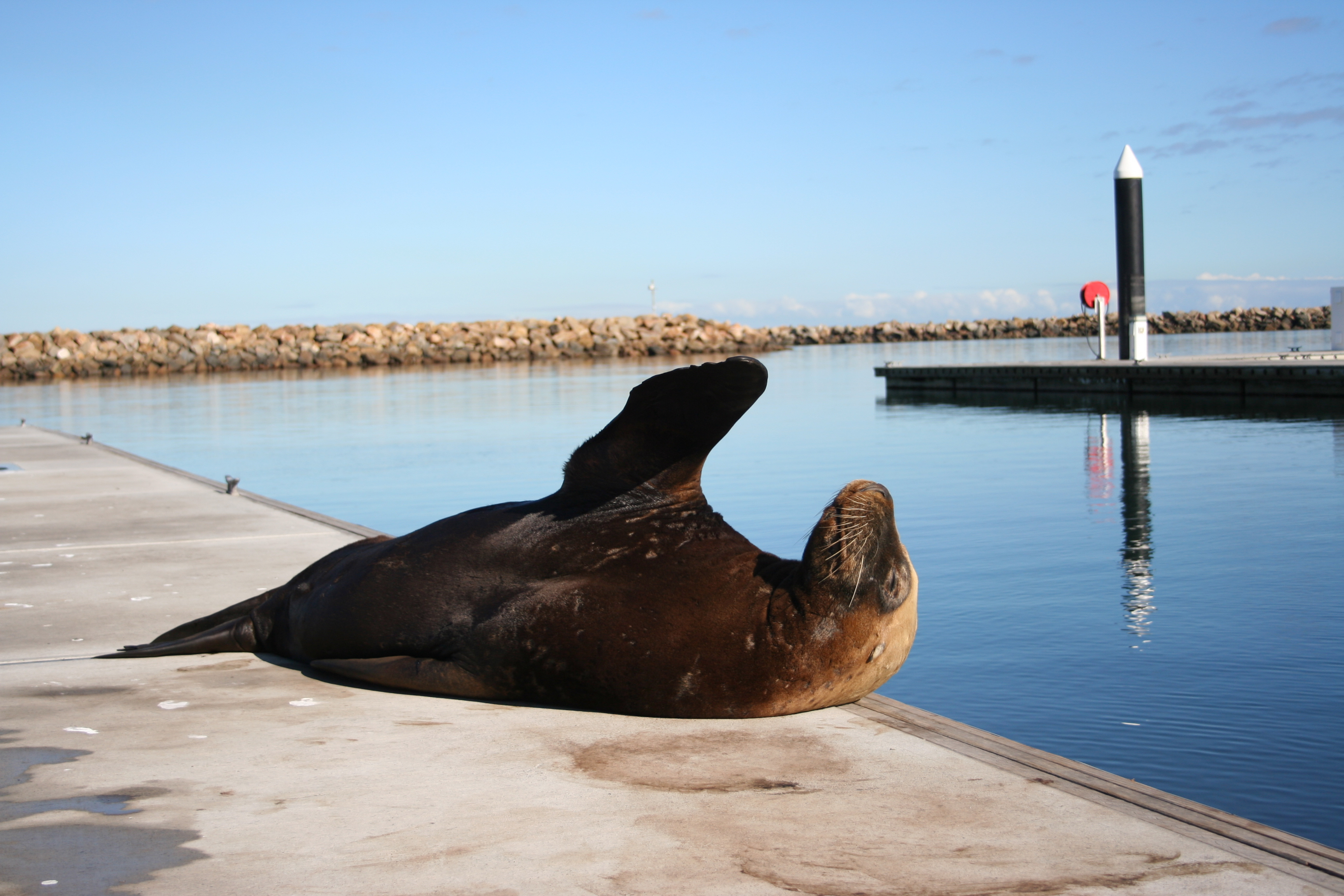
20 facts for 20 years of the Adelaide Dolphin Sanctuary
Where is the Adelaide Dolphin Sanctuary?
The Sanctuary is only about a 20 minute drive from Adelaide’s city centre. It encompasses the Port River and Barker Inlet and stretches north to Port Gawler, covering the waters of Outer Harbour and intertidal areas. It’s a world of contrasts, including unchanged natural habitat, recreational activities, major industry and a busy, living city port. Amongst all this, dolphins have proven themselves to be highly adaptable.

The Kaurna People have lived within this area for thousands of years, and it continues to hold important values for them. Several traditional stories are connected with the Adelaide Dolphin Sanctuary area, including The Wanderings of Tjirbruke.
What’s changed over 20 years?
One of the most visible changes has been the rehabilitation of Garden Island, previously a landfill site. It has been capped with 1.4 million tonnes of clay and soil, and planted with native grasses, trees and shrubs.
“The way this place looks and is managed has changed dramatically; it’s valued and cared for,” says Marine Parks ranger Jon Emmett.
Less visible but very important, Jon says, has been the regulation of local industry, such as the power plant, ship chandlery and international shipping operations.
“The EPA developed a water quality improvement plan for the Port waterways. The water quality has become much, much better for sustaining populations of fish and other animals.”
The ADS plays a prominent role in assessing any further development in the area, together with the Coast Protection Board, the EPA and local government.
Human behaviour has also seen changes for the better. Before the establishment of the Sanctuary, dolphins in the area had been shot and speared in senseless attacks.
With the presence of rangers and public recognition of the Sanctuary, there have been no deliberate attacks in many years.
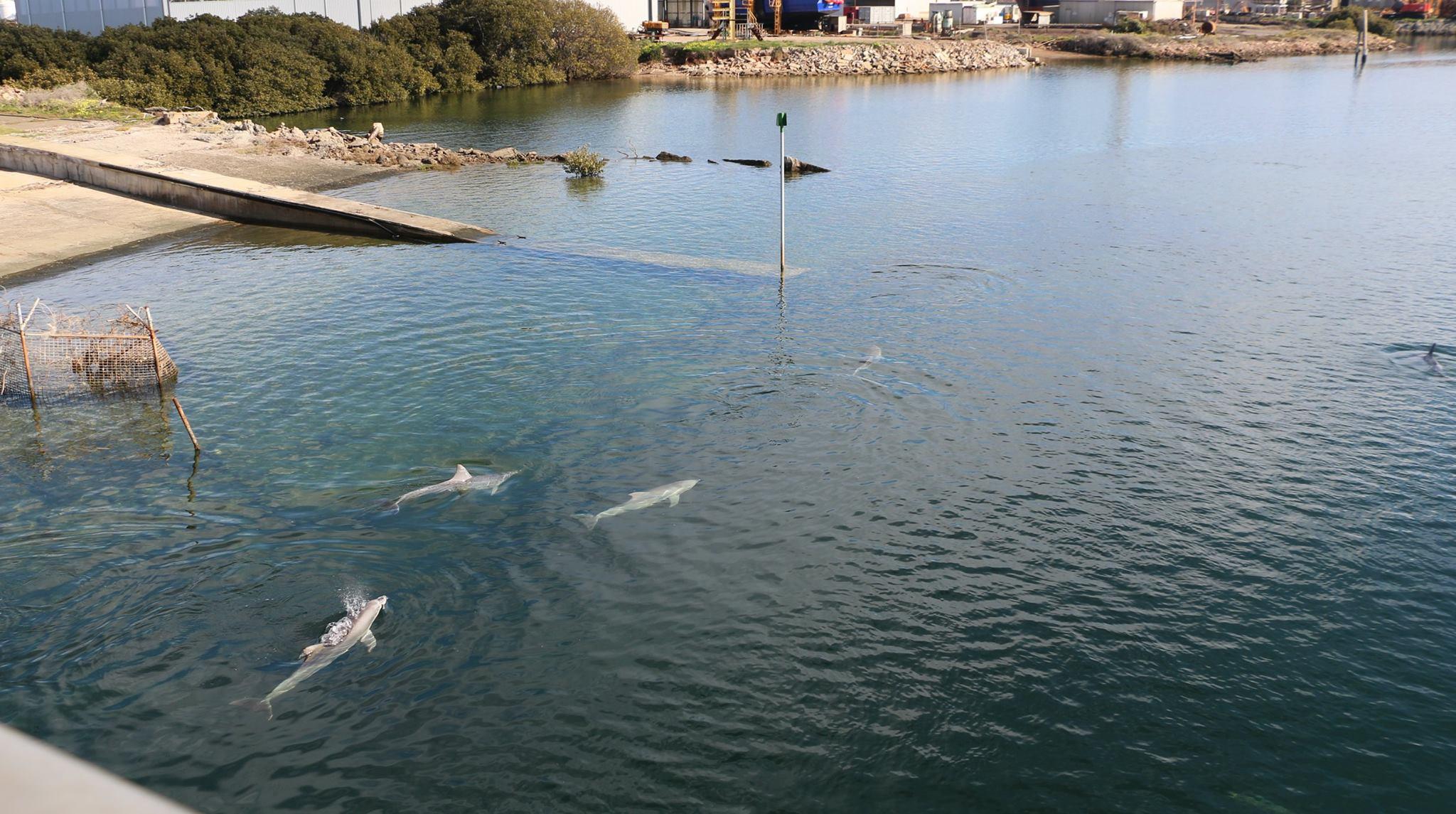
A key location for dolphin research
Dr Mike Bossley, a leading figure in the establishment of the ADS, has been conducting research into the behavioural ecology of the Port River estuary’s dolphins since 1988.
The ADS rangers have undertaken surveys since 2015. Today, ranger Dr Nikki Zanardo assists Honours and PhD students from South Australian universities to survey the ADS dolphins in multiple studies of dolphin health, habitat use, social behaviour and population ecology.
“We have a unique opportunity here, as animals spend so much time close to the shore,” says Dr Zanardo.
“We can undertake research and share findings with the community, who can observe what’s happening for themselves. The research can really help people connect to the local marine environment.”
Is the algal bloom affecting the dolphins?
The algae has been detected in the Port River, home to the Adelaide Dolphin Sanctuary. Right now, the dolphins are not believed to be at immediate risk, but the water quality is being closely monitored.
A big thanks to dedicated volunteers
Volunteers have played an integral part in monitoring dolphins and collecting survey data in the ADS. They’re frequently the first to observe significant events like new calves or entanglements with fishing gear. Over the last 20 years, volunteer groups such as the Adelaide Dolphin Sanctuary Action Group and the Whale and Dolphin Conservation have showcased the significance of the ADS and its wildlife, attending community events and providing education talks to countless school and community groups.
What’s the best way to enjoy the Dolphin Sanctuary?
Jon recommends visiting the boat ramp and picnic area at Garden Island.
“On a warm day in summer, the whole grassy area is covered with people, they’re having barbecues, swimming, kicking a footy,” says Jon.
Stroll on the boardwalk over the water and keep an eye out for dolphins, normally seen in the area a couple of times a day. Kayak tours launch from here to enjoy the calm waters, mangroves and tidal creeks.

What can people do to help the dolphins?
“Look after the habitat, and the dolphins will look after themselves,” says Jon.
“We don’t need to manage dolphins or fish, we just need people to behave in a way that respects the environment.”
Actions you can take include:
- Leave no trace – discarded fishing gear poses a high threat to dolphins, and floating rubbish may be ingested. Use bins or take rubbish with you.
- Support cleaner stormwater – do not dump any pollutants such as detergents and chemicals into gutters, drains or waterways.
- Do not feed the dolphins or touch them – they are curious and intelligent, and can quickly adopt behaviours that could put them in danger and cause loss of natural survival skills.
- Boat owners should stick to speed limits within the sanctuary and know the marine mammal approach distances for boats and kayaks.
- If you are fishing and you see a dolphin close by, reel in your lines or change location.

Twenty facts about the Adelaide Dolphin Sanctuary and its dolphins to mark its 20th anniversary
1. The ADS covers 118 square kilometres of water, mangroves, saltmarsh, tidal flats and tidal creeks.
2. The dolphins found here are Indo-Pacific bottlenose dolphins (Tursiops aduncus).
3. Many of the dolphins seen close to shore are ‘year-round residents’ of the ADS. Other ‘transient’ individuals use the sanctuary as well as the wider Adelaide coastal area and Gulf St Vincent. Based on Dr Mike Bossley’s long term data set 1993 – 2020, dolphin abundance varies across the seasons, with highest in summer (averaging 85 individuals), and lowest in winter (averaging 69 individuals).
4. A fully-grown bottlenose dolphin can be around 120 – 160 kilograms and over two metres long.
5. Individual dolphins can be recognised by nicks, notches and scratches on their dorsal fins, which wild dolphins accumulate over their lives.
6. Within the ADS is a ships’ graveyard where the remains of at least 40 vessels, scrapped here during the first half of the 20th century, can be seen at the water’s edge.
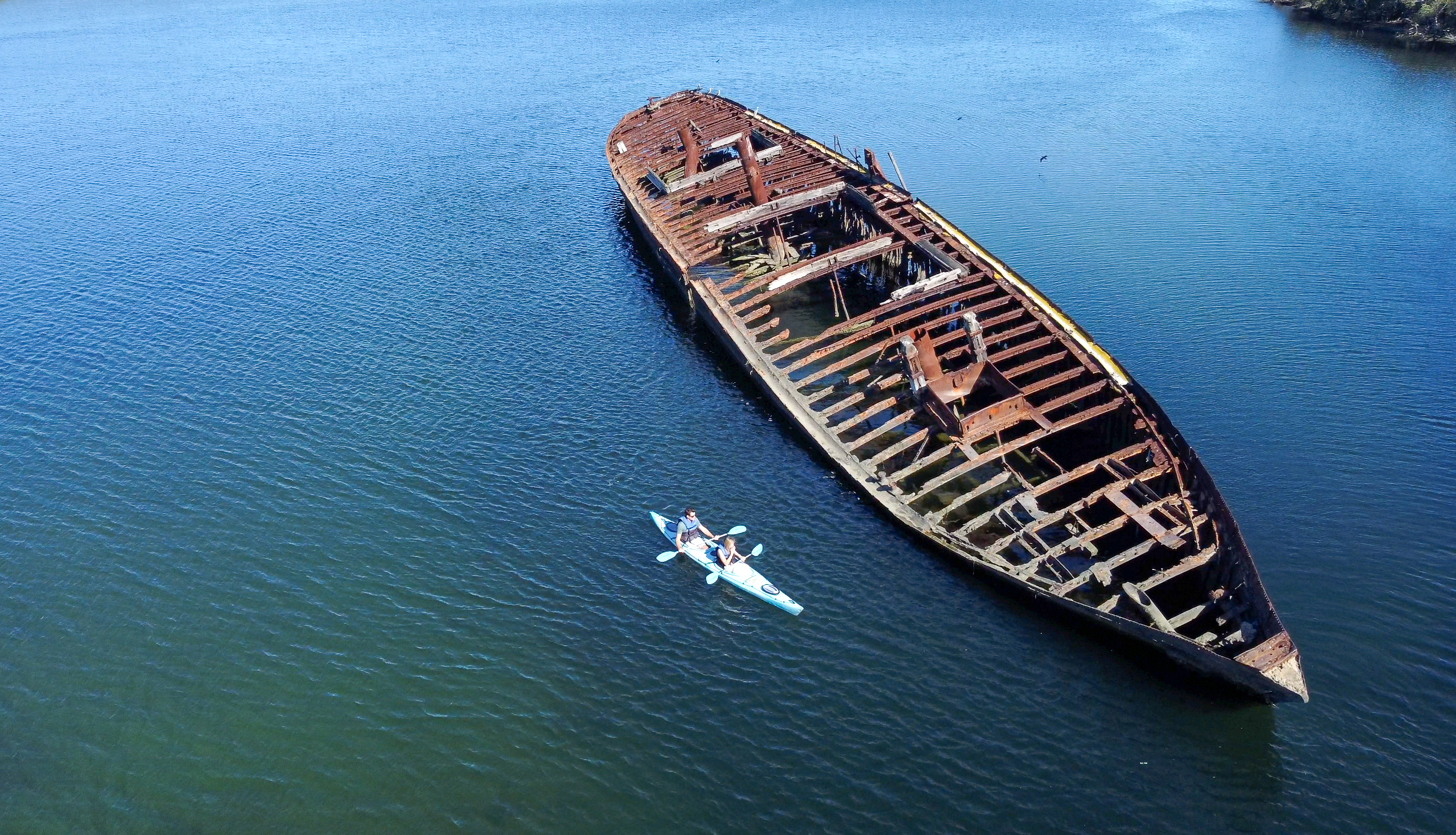
7. Some of the ‘transient’ dolphins have learnt to use the lock system to get in and out of Patawalonga Lake, where there are lots of fish to eat. As a boat enters the lock, they’ll go in too, wait while the water level is managed, and exit with the boat.
8. The mangroves, which grow between the high and low tide points, are an important breeding ground for fish, including many species that you probably enjoy eating.
9. Mangroves are estimated to have been growing here for around 10,000 years.
10. The sheltered nature of Barker Inlet makes it a very popular place for kayakers, from beginners to the more experienced.
11. Dolphins are naturally curious and playful, and deliberately interact with humans and watercraft. Remember, a dolphin can approach you, but you must not attempt to get closer than 50m from a dolphin, or 150m from a dolphin with a calf.
12. You might spot long-nosed fur seals or endangered Australian sea lions within the Sanctuary. After days at sea foraging for food, they haul out on the shore or rocks. Please don’t disturb them — they need lots of rest before returning to sea.
13. On Garden Island, old bricks and rubble can be seen at the water’s edge – a reminder of the site’s history as a landfill dump.
14.The Sanctuary is part of a larger marine, estuarine and terrestrial protected area network, including Upper Gulf St Vincent Marine Park, Adelaide International Bird Sanctuary National Park – Winaityinaityi Pangkara, and Torrens Island Conservation Park.
15. Many seabirds and shorebirds live, roost, nest and feed at the Sanctuary, including rare and endangered species. Look for pelicans, cormorants, oystercatchers, red-capped plovers and osprey. There’s also a breeding rookery for the endangered fairy tern.
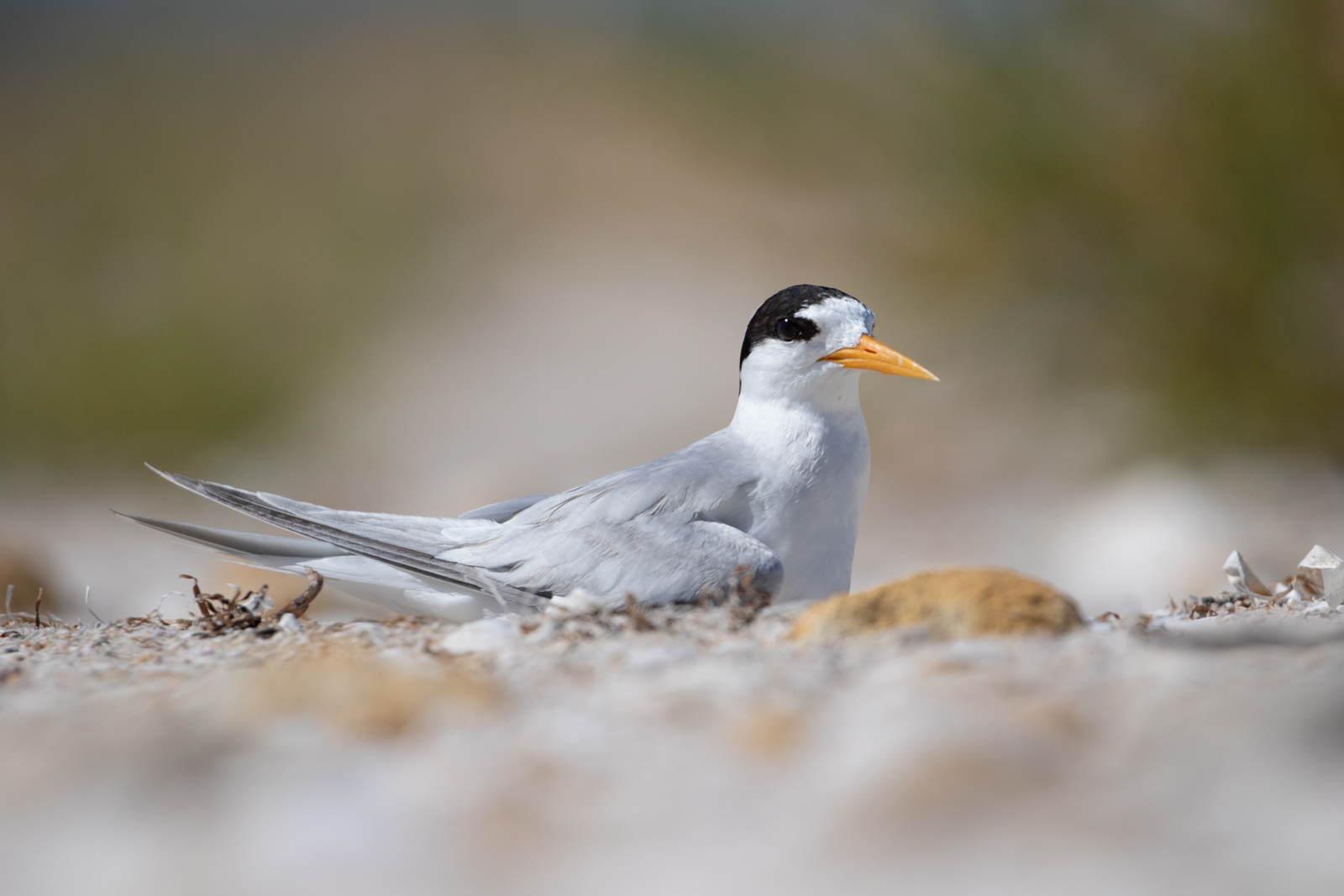
16. The ADS takes a minimal intervention approach to sick and injured dolphins. Allowing natural events to take their course can support a healthy population. Where human activity has caused an issue, such as a fishing line entanglement, they will collaborate with vets and water police to help.
17. The Salisbury and Port Adelaide Enfield councils have created large areas of urban wetland, which have significantly improved the quality of stormwater entering the ADS.
18. The Adelaide Speedboat Club operates over one stretch of water in the Sanctuary, and on race days has dolphin spotters at either end, with racing paused if dolphins are present.
19. OzFish (Adelaide Chapter) is working with volunteers and the local community to restore locally extinct native oyster reefs.
20. Major new waterfront housing is in development at Port Adelaide. It is hoped that the residents will see the benefits of supporting a healthy Dolphin Sanctuary, to provide a welcoming ecosystem for all inhabitants into the future.
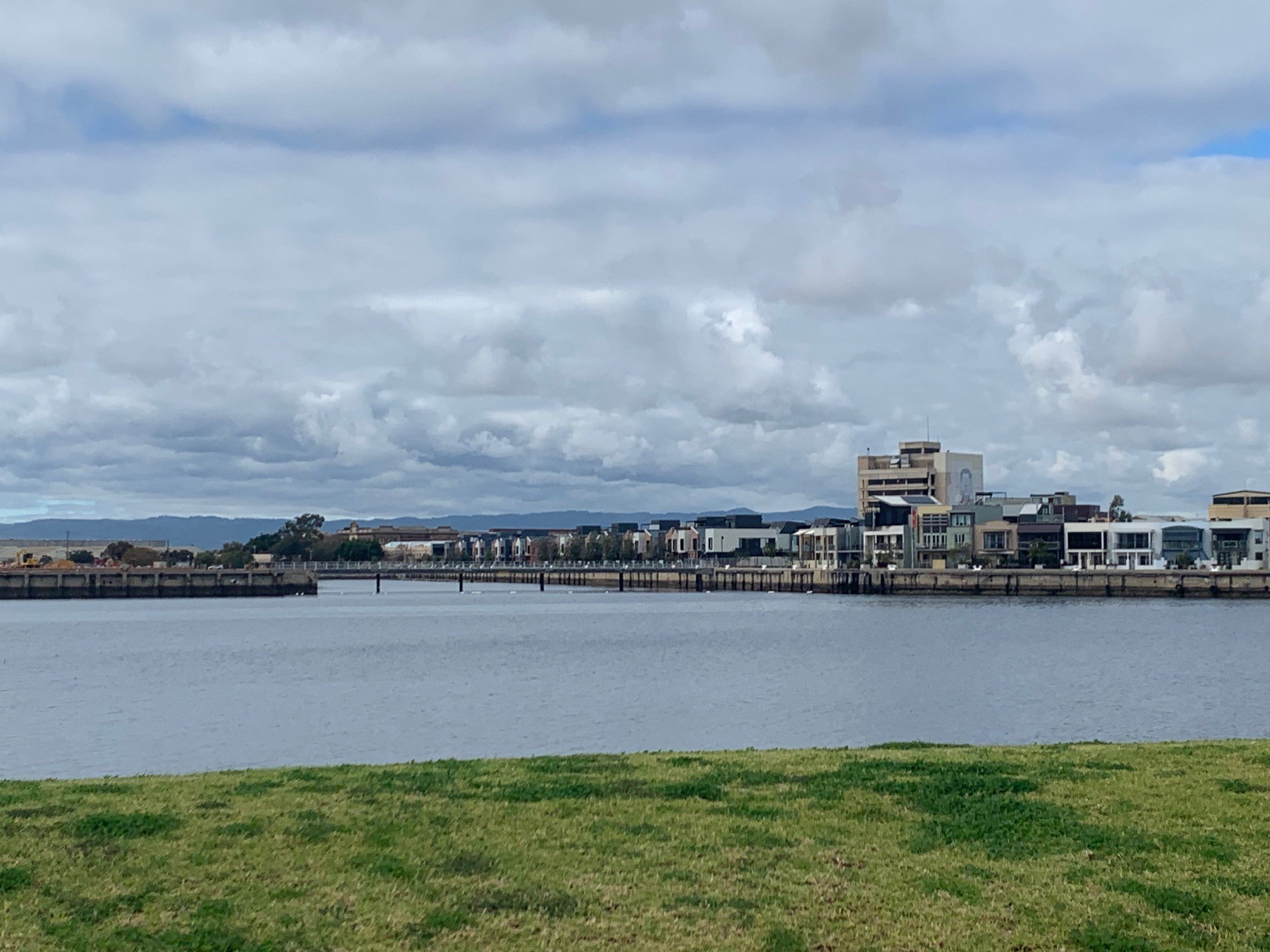
Park of the Month
Throughout December, the Adelaide Dolphin Sanctuary along with Encounter Marine Park is being highlighted as the National Parks and Wildlife Service’s Park of the Month. Check out the full program of exciting events happening here!
Stay in the know: Sign up to get updates from DEW or National Parks and Wildlife Service South Australia, straight to your inbox!
